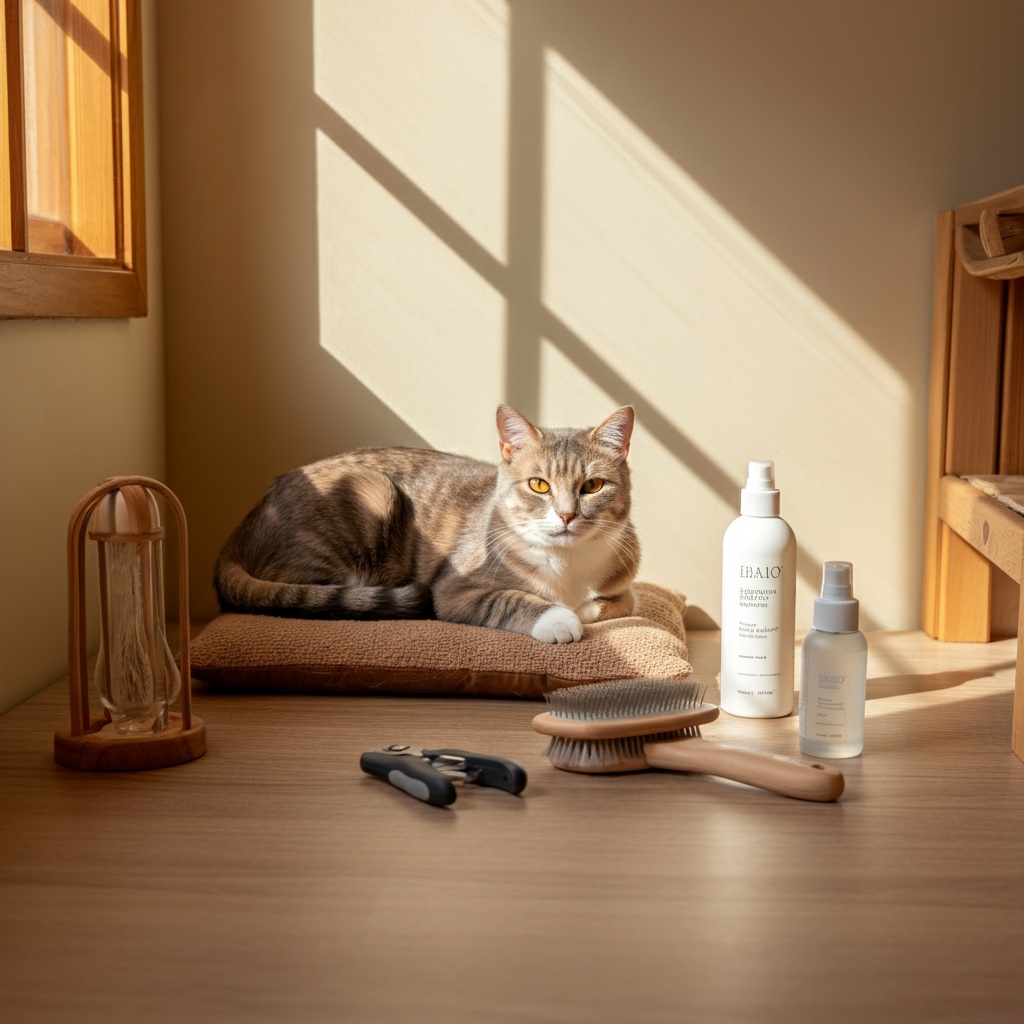
Keeping your feline friend looking and feeling their best requires the right tools. Grooming is more than just aesthetics; it’s about maintaining your cat’s health, preventing issues like hairballs, and strengthening the trust between you and your pet. But with so many grooming tools on the market, where do you start?
This guide introduces the essential cat grooming tools every owner should have and explains how to use them effectively. Whether you’re a first-time cat parent or a seasoned owner, these tips will help keep your cat happy, healthy, and looking fabulous.
Grooming Keeps Cats Healthy and Happy
Cats are known for being meticulous groomers. They spend a significant amount of their day cleaning themselves. However, this doesn’t mean they can do it all on their own! Grooming not only helps reduce shedding and hairballs but also strengthens the bond between you and your cat. Plus, regular grooming sessions are the perfect opportunity to check for any skin issues, fleas, or other health concerns.
To make grooming stress-free for both you and your furry friend, having the right tools is essential. Below, we break down the must-have grooming tools every cat owner needs.
The Must-Have Cat Grooming Tools
1. The Right Brush for Your Cat’s Coat
Not all brushes are created equal, and the type of brush you need depends on your cat’s coat. Regular brushing can help reduce shedding, prevent mats, and keep your home fur-free.
- Slicker Brush: Ideal for long-haired breeds like Maine Coons or Persians, a slicker brush can remove tangles and loose fur effectively.
- Deshedding Tool: Tools like the FURminator are perfect for short- and medium-haired cats, reducing excess shedding by reaching the undercoat.
- Bristle Brush: For short-haired cats like British Shorthairs, a soft bristle brush smooths the coat and enhances natural shine.
⭐ Pro Tip: Always brush in the direction of your cat’s fur to avoid causing discomfort.
2. Nail Clippers or Grinders
Trimming your cat’s nails regularly is crucial to their comfort and preventing scratches to your furniture (and yourself!).
- Scissor-Style Clippers: These offer precision and are great for beginners.
- Guillotine Clippers: These are often more comfortable for experienced users.
- Electric Nail Grinders: For cats that tolerate sound and mild vibrations, these are a gentle and effective alternative.
⭐ Pro Tip: Trim only the clear part of the nail to avoid cutting into the quick. If you’re unsure, ask a professional groomer for guidance.
3. Cat-Safe Shampoo and Conditioner
Bathing isn’t always necessary for cats, but when it is, you’ll need the right products. Don’t use human shampoo; it can dry out their skin and cause irritation.
- Hypoallergenic Shampoo: Great for cats with sensitive skin.
- Flea and Tick Shampoo: If your cat has an infestation, these specialized shampoos can help eliminate pests.
- Dry Shampoo: Ideal for cats who don’t love water, dry shampoo is a quick and effective alternative.
⭐ Pro Tip: Use lukewarm water and a gentle sprayer to make bath time less stressful.
4. A Metal Comb for Detangling
A sturdy metal comb is perfect for removing small tangles and preventing mats, especially in long-haired breeds. Look for one with wide and narrow teeth for versatility.
⭐ Pro Tip: Work through tangles gently, starting at the tips and moving toward the base.
5. Eye and Ear Cleaning Supplies
Cats occasionally need help keeping their eyes and ears clean.
- Eye Wipes: Great for removing tear stains, especially in breeds like Persians and Himalayans.
- Ear Cleaner Solution: Ensure your cat’s ears are free of dirt and wax build-up. Apply a cat-safe ear cleaner with a cotton ball (never use cotton swabs).
⭐ Pro Tip: Avoid inserting anything deep into your cat’s ears. If in doubt, consult your veterinarian.
Continues after advertising
6. Toothbrush and Toothpaste
Dental health is often overlooked but is just as important as coat care. Invest in a cat-specific toothbrush and toothpaste.
- Finger Brushes: These are easy to use and designed for beginners.
- Dual-Ended Toothbrushes: Perfect for reaching all areas of your cat’s mouth.
- Cat-Safe Toothpaste: Never use human toothpaste; instead, opt for flavors like chicken or fish to make the process easier.
⭐ Pro Tip: Start slow and get your cat used to the toothbrush by letting them sniff and lick it before you begin.
7. Grooming Gloves
Grooming gloves are a fantastic tool for cats that dislike traditional brushes. They allow you to groom your cat while petting them, making the experience more enjoyable for both of you.
⭐ Pro Tip: Grooming gloves are especially useful during shedding season to capture loose fur.
8. A Mat Remover
If mats do form in your cat’s fur, a mat remover is the best tool to detangle without causing pain. These come in various designs, from combs to razors.
⭐ Pro Tip: For stubborn mats close to the skin, consult a professional groomer to avoid injuring your cat.
9. A Cat Lint Roller
It’s inevitable that your clothes and furniture will acquire some cat hair. High-quality lint rollers designed for pet hair make cleanup quick and easy.
⭐ Pro Tip: Keep a lint roller by your door for a quick touch-up before heading out.
10. A Soft Towel or Drying Sheet
After baths or rainy-day escapades, a soft towel or a quick-drying pet sheet is essential for getting your cat dry and cozy.
⭐ Pro Tip: Always blot your cat gently instead of rubbing to prevent tangling or irritating their skin.
Establishing a Grooming Routine
Consistency is key to successful grooming. Here’s an easy-to-follow routine:
- Brush your cat’s coat 2–3 times a week (or daily for long-haired breeds).
- Trim your cat’s nails every 2–4 weeks.
- Clean their ears and eyes as needed, especially if you notice dirt or discharge.
- Brush their teeth daily or at least a few times a week.
- Set aside time for grooming when your cat is relaxed, such as after playtime or a meal.
Creating a Stress-Free Grooming Experience
Grooming should never feel like a chore—for you or your cat! Here are some tips to make it enjoyable:
- Start Slow: Introduce tools gradually, letting your cat sniff and inspect them before use.
- Use Treats and Praise: Reward your cat during and after grooming to build positive associations.
- Pay Attention to Their Body Language: If your cat seems stressed or irritated, take a break and try again later.
- Get Professional Help: For tasks like mat removal or nail trimming, don’t hesitate to call in a professional groomer or vet.
Read More👉 Common Cat Health Issues and How to Prevent Them
Keep Your Cat Looking and Feeling Their Best
Grooming your cat isn’t just about keeping them clean; it’s an opportunity to bond and ensure their health and well-being. With the right tools and routine, the experience can be enjoyable for both you and your feline friend. Start building your grooming toolkit today, and watch as your cat struts with confidence, knowing they’re the best-looking kitty on the block.
For more expert advice on cat care or product recommendations, visit Pets Hub and explore our grooming section. Happy grooming!



